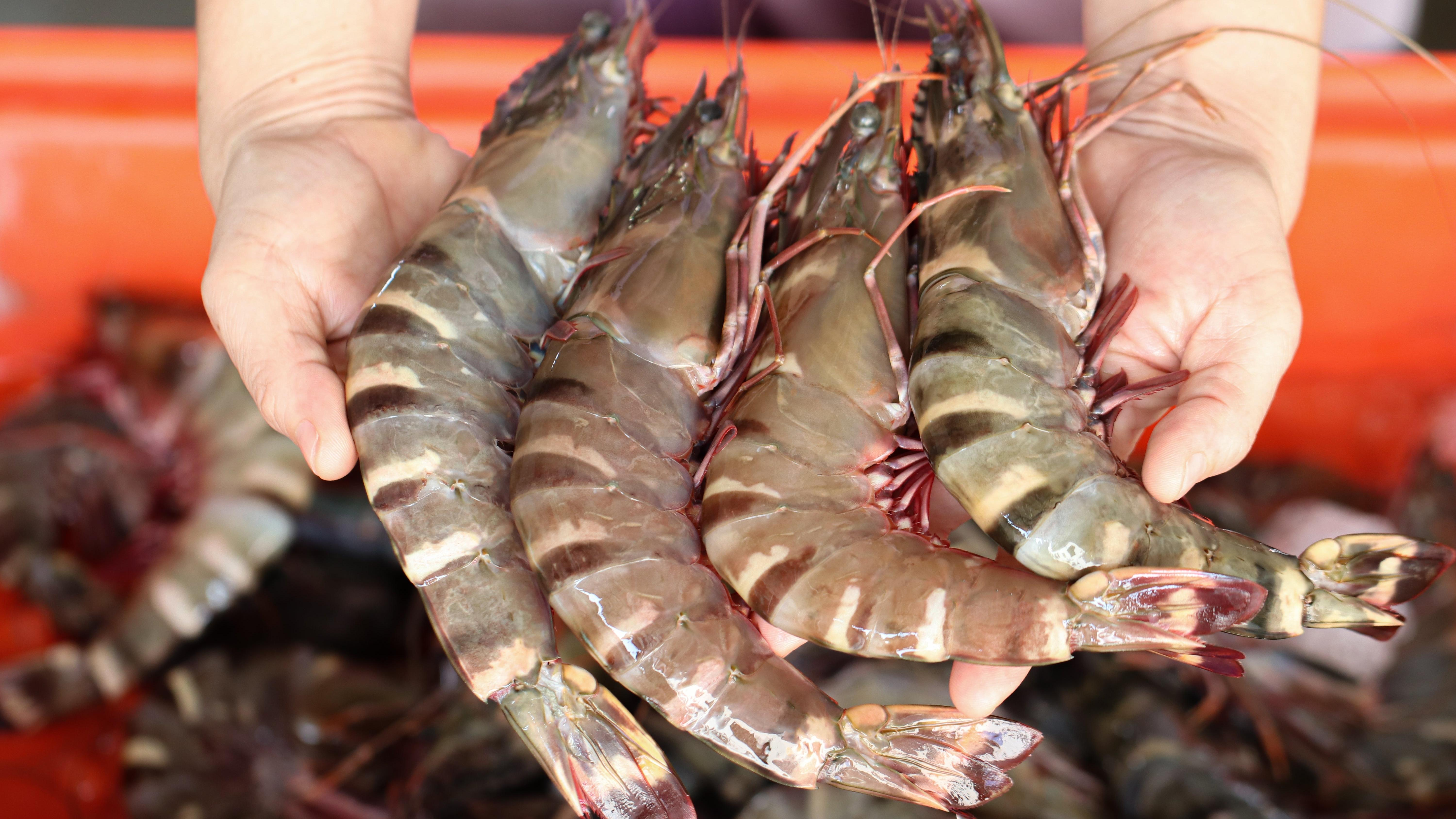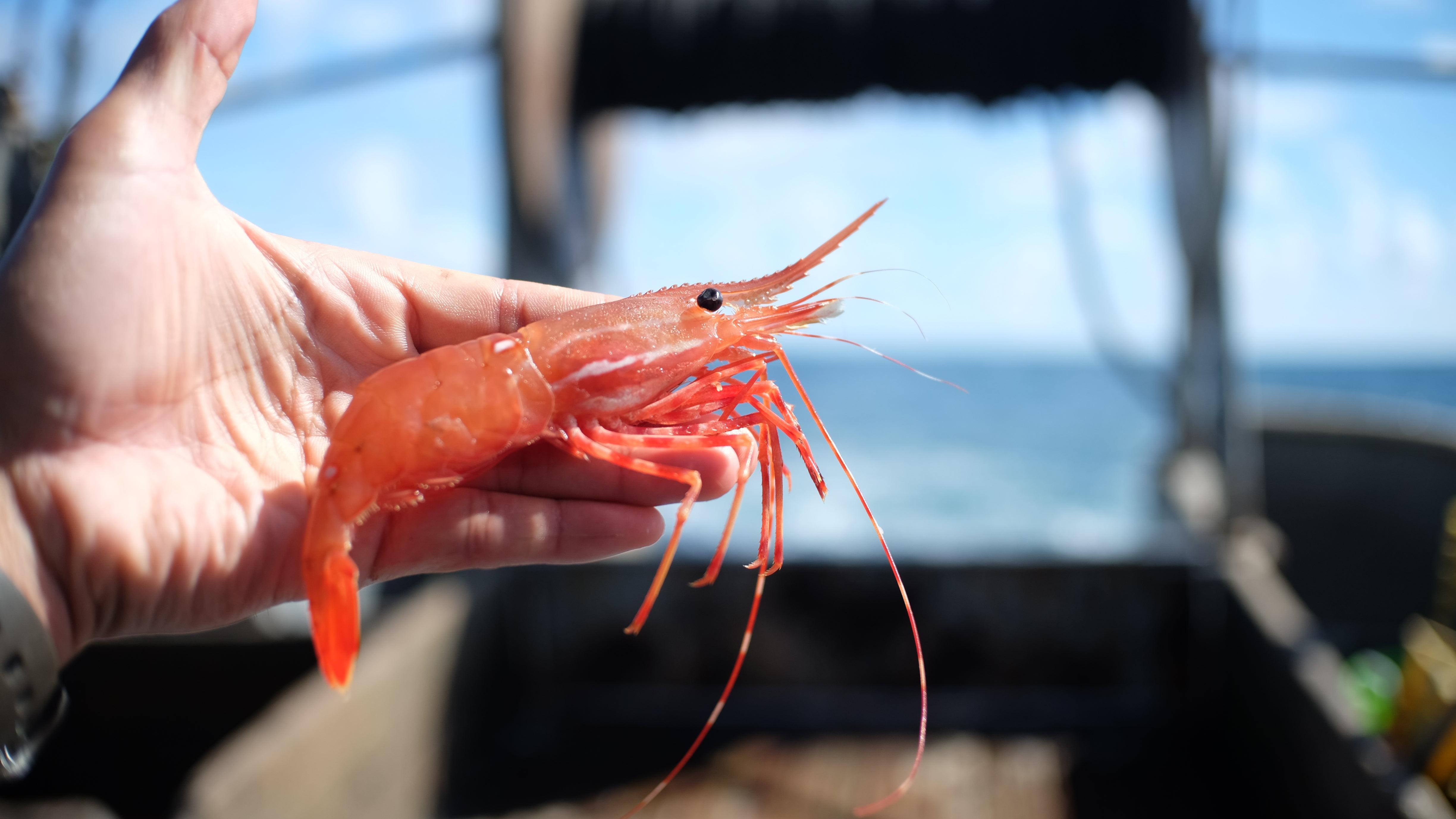A Quick, User-Friendly Guide To Buying Grocery Store Shrimp
Shrimp can be a little confusing. Here's what the all the labels mean.
Shrimp is one of the most versatile shellfish in existence. It's tremendously fast to cook, and its popular because it is, of course, delicious. But wow, are there a lot of different varieties of shrimp out there, from fresh to frozen, gigantic to tiny, and even one species to the next, all packaged and prepared differently. To help you make sense of it, we've whipped up a quick guide on what certain shrimp terminology means at the market. Hopefully it'll help clear up any confusion when buying some tails fit for the barbie this summer.
Shrimp size matters
Yes, size matters when it comes to shrimp. They come in diminutive thumbnail sizes, all the way up to versions labeled "Extra Colossal," which are about as big as you'd imagine.
For sizing, they're weighed out at quantity of shrimp per pound, and will typically come labeled with the letter "U" and a number. The "U" stands for "under," meaning a classification of say, U/15 will contain under 15 individual shrimp per pound. Anything labeled with numbers like 36/40, say, means you'll get anywhere between 36 to 40 shrimp per pound in that package. Got it?
As you might guess, size typically correlates to price. The bigger the shrimp, the more money you'll be shelling out (woo, pun!) at the grocery store or restaurant, like when you get a massive shrimp cocktail at a high-end steakhouse. The Spruce Eats says that size specifications are as follows:
- Extra Colossal :U/10
- Super Colossal: U/12
- Colossal: U/15
- Extra Jumbo: 16/20
- Jumbo: 21/25
- Extra Large: 26/30
- Large: 31/35
- Medium Large: 36/40
- Medium: 41/50
- Small: 51/60
- Extra Small: 61/70
Be warned that descriptors like "Large" and "Jumbo" aren't standardized across the industry, so different packages might use slightly different terms. This is why the per-pound count is really important. If you're still a little unsure of what to get, that's fine. For most applications, you can eyeball the shrimp through the packaging to see if they're size you're looking for.
Shrimp vs. prawns: What’s the difference?
Technically, shrimp differs from prawn, as the two have distinct physical characteristics. But you'd really have to know what to look out for. Food and Wine describes them like this:
Prawns have branching gills, claws on three pairs of their legs and second pincers that are larger than their front ones. Additionally, prawns lack the distinct bend in their bodies that is seen with shrimp and each of their body segments overlaps the one behind it in succession.
Shrimp, on the other hand, have lamellar (or plate-like) gills, and claws on two pairs of their legs. Their front pincers are typically their largest. Additionally, shrimp have a distinct bend in their bodies and their second segments overlap the first and third segments.
Prawns tend to be slightly bigger (and more expensive), and shrimp are also a little smaller. Culinarily speaking, they taste very similar, which means they are mostl interchangeable in recipes. Hell, I doubt I'd be able to tell the difference in a blind taste test. If anyone you know vehemently claims they could tell, I'd challenge them. You might win a bet out of it.
A guide to shrimp varieties
Here's a quick rundown of the various shrimps you're likely to encounter while you shop (and for more detail, Serious Eats has a great guide to buying shrimp that goes deeper on the topic).
- Brown, white, and pink shrimp: These are the ones Americans typically think of as supermarket shrimp. They come from a variety of places across the world, and all have relatively mild flavor.
- Tiger shrimp: These are a little harder to find than the brown, white, and pink ones, here in the United States you can still get them fairly easily. You'll recognize them by their black stripes and larger, more meaty size. Size-wise, it seems like the sky's the limit; they can grow up to a whole foot in length (though good luck finding one of those bad boys). Most importantly, they've got a more concentrated, shrimp-like flavor.
- Rock shrimp: Rock shrimp have a much harder shell than the other types, and they're closer to lobster flavor than they are of the typical shrimp we eat regularly. In my experience, they're a real treat because of their all-around meatier texture.
- Spot prawns: Spot prawns are, in my opinion, the most beautiful of the bunch. They're the pretty crustaceans with white stripes against an overall pinkish-red hue. Spot prawns yield sweet and delicate meat—and they aren't cheap. If you've ever had amaebi sushi, those are spot prawns atop the rice, and the only ones considered good enough to eat raw. Do not skip ordering amaebi at a sushi restaurant.
Should I buy frozen or fresh shrimp?
It's likely that the "fresh" shrimp you see at the market was at one point frozen. Bon Appétit says that unless fresh shrimp are clearly marked as being straight from the harbor, you're just getting the thawed stuff. Sorry to be a bummer.
What's bad about that is that shrimp, like all shellfish, degrade pretty quickly in quality the longer they're thawed. You probably have no idea how long they've been that way in the seafood display, so if you don't plan to use them right away, frozen is your best bet.
How should I thaw frozen shrimp?
Shrimp thaws pretty fast. If you don't want to let them sit in the fridge overnight, just toss an unopened package (cooked or raw) of it into a bowl of cold water and it'll thaw out within 45 minutes. If that's too slow for you, sometimes I just keep a slow trickle of water on them from the tap to keep the water moving around the package, and they're good to go within 20 minutes or less.
Don't use the microwave, as tempting as that might seem, as you'll start to cook the delicate flesh. Overcooked shrimp sucks ass.
If you broil them, you can skip the thawing step altogether by following these simple instructions.
How about the vein?
We wrote about deveining shrimp already, but here's the short and sweet version: The vein that runs from the center of the tail along the back of the shrimp is not, in fact, shrimp poo, but rather the creature's intestinal tract. It tastes like mud, and you will for sure notice, so it's best to get rid of it. (That being said, I've eaten it before and I haven't died yet.)
Tiny varieties of shrimp aren't worth deveining, though, since in those cases you probably won't notice the flavor. Besides, it's damn near impossible to do by hand.
To shell or not to shell?
This is up to you. If you want the ease of prep, feel free to buy shrimp with the shell already removed. But if you do a side-by-side comparison at the store, you'll notice a fairly significant price difference between shell-on vs shell-off shrimp. The kind that's already been prepped will naturally cost you more. You can also buy shell-on but deveined, and of course, whole shrimp.
Shrimp shells really do have a lot of flavor, which is imparted to the meat as it cooks. It's delicious. Yes, you do have to peel the shell off as you eat, but peeling shrimp is easy after it's cooked! Plus you can save the shells for a soup stock later, if you like.
If you opt for buying whole shrimp, you get to enjoy the heads, too. Personally, I think shrimp heads are delicious, since you can suck the contents out of the shell after they've been cooked. There's a lot of deep flavor in them. But some people are skeeved out by those little beady black eyes that look like they're judging you. It's your life; I respect your decisions.
You'll notice that sushi restaurants sometimes give you whole deep-fried shrimp heads, which you can eat in their entirety (shell and all), and those are delicious too. Think of them like one big-ass crackly shrimp chip.
Should I buy raw shrimp or cooked shrimp?
It depends on how you're using the shrimp. If you're a regular consumer of shrimp cocktail like us, the cooked kind are perfect if you're looking for an appetizer, something to eat with wine, or a snack. All you need to do is thaw pre-cooked ones and pop open some cocktail sauce. I've been known to make a lightning-fast shrimp salad sandwich by using the precooked frozen stuff and it's frickin' delicious.
If you're actually doing some active cooking, like making shrimp and grits or a stir-fry, or grilling them, raw shrimp is better. Cooking from raw in a dish also imparts the shrimp flavor to the other ingredients, and who doesn't want more of that? Besides, shrimp cook in just a few minutes, if not sooner, so it's barely any effort on your part. If you use pre-cooked shrimp in those instances, it'll likely be overcooked by the time you're done assembling the dish.
Happy shrimping, and good luck!

